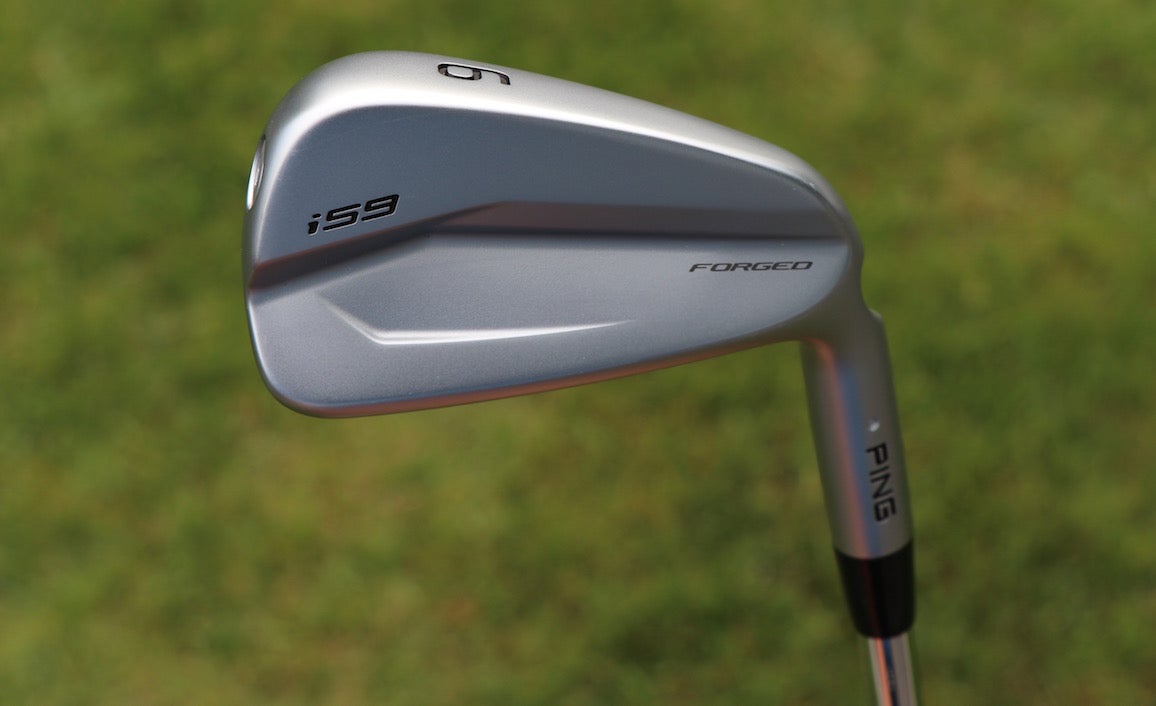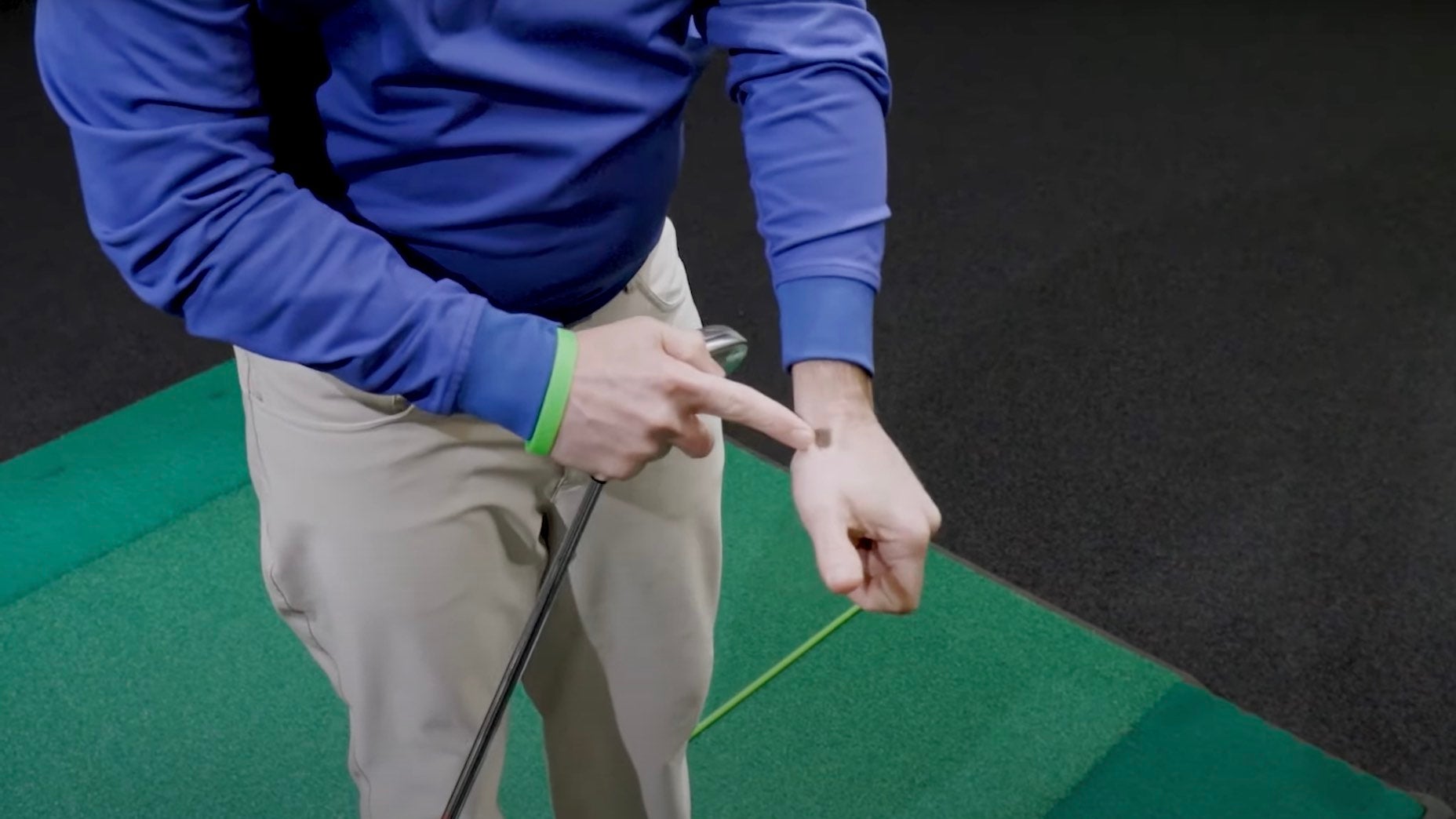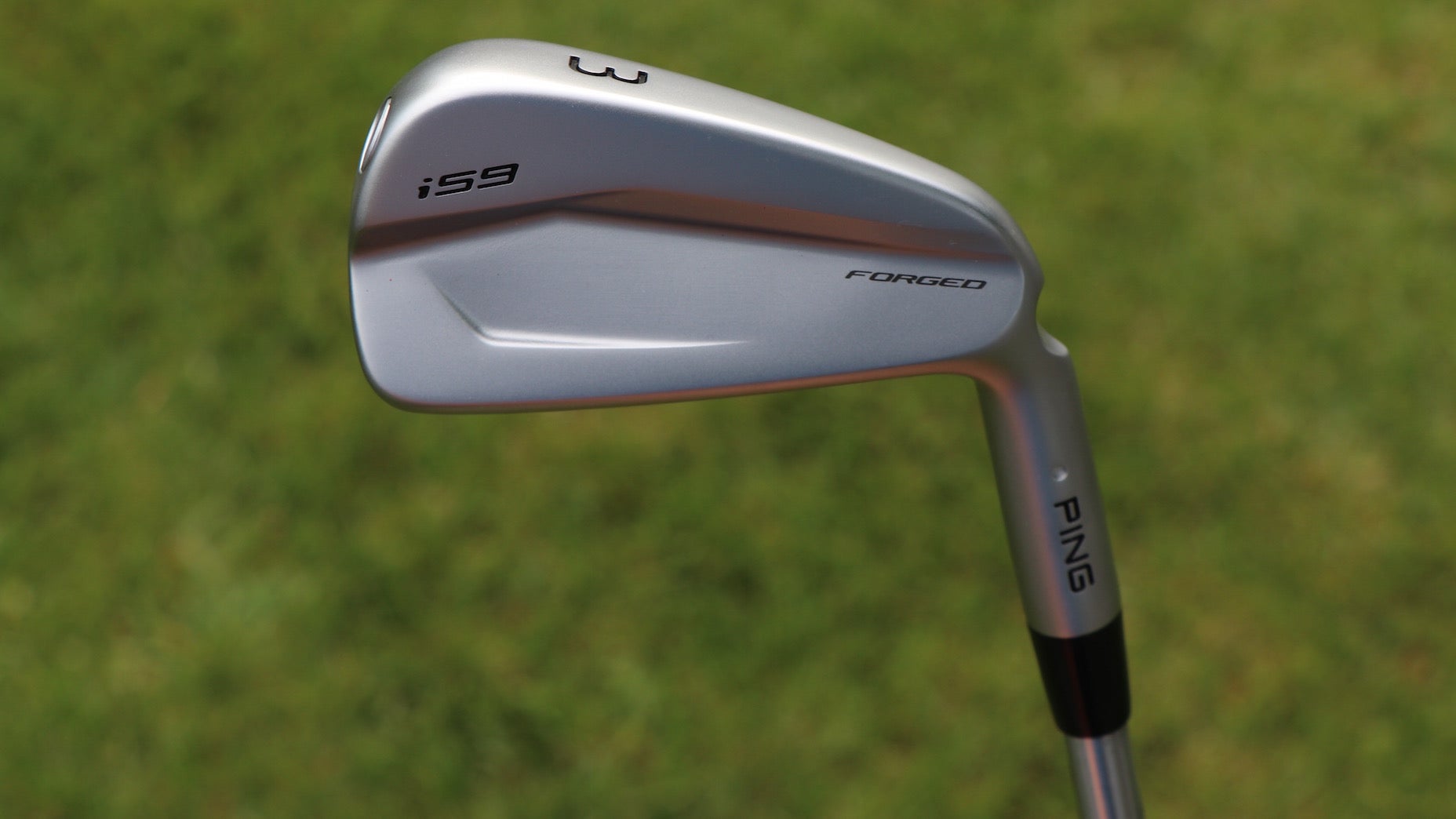
Ping’s new i59 irons.
Andrew Tursky/GOLF.com
Welcome to GOLF.com’s ClubTest Proving Ground, where Managing Equipment Editor Jonathan Wall and Senior Equipment Editor Andrew Tursky put the latest designs and groundbreaking technology in the equipment space to the test on the range and the course.
The tools: Ping i59 (5- and 7-iron; Oban CT 115X shafts), Mizuno JPX919 Forged (5- and 7-iron; Oban CT 115X shafts), 1 dozen Titleist Pro V1x 2021 balls
The test: Determine if Ping’s i59 offers similar forgiveness and carry numbers when compared to a slightly larger iron profile.
The results: You wouldn’t believe it by my current swing (and scores), but there was a time in my life where I sported a plus-handicap. It’s preposterous, I know. Along the way, I grew up, tied the knot, added some kids to the mix — and my handicap promptly skyrocketed.
Some of you are probably nodding along right now.
I went from playing a blended set of blades and cavity backs to a full-blown set of game-improvement irons. Coming to the realization that you need offset, forgiveness and ball speed is a difficult pill to swallow. It requires you to put pride and ego aside to salvage whatever shred of “game” you used to have.
At the moment, I’m hovering around a 6.5 handicap index with a set of Mizuno JPX919 Forged irons that act as a glorified security blanket — turning poor shots into something playable. The combination has been tough to beat since I put them in play several years ago, so I’ve eschewed would-be suitors and stuck with what’s worked. (Yes, GOLF’s gear guy actually plays the same set of irons for more than one round.)
Of course, playing the same set of irons for a couple of years doesn’t mean I’ve sworn off iron testing. I still enjoy seeing what’s out there and putting it through the paces. There’s nothing wrong with looking. Coming off a trip to Bandon Dunes where Tursky and I played 103 holes in less than four days, I made it a point to start playing more golf instead of simply testing the latest wares on the driving range. As we’ve discussed in the past, on-course testing is a critical part of the process.
Along with playing more golf, I’ve toyed with the idea of swapping my game-improvement irons for a better-player look (reduced offset, slightly smaller profile) in an attempt to regain my old mojo. But here’s the thing: I don’t have any interest in giving up the forgiveness and carry yardages I’ve come to rely on in recent years.
My list of asks would’ve been darn-near impossible years ago, but with the introduction of tungsten, aluminum and other materials to the iron design recipe, it’s now possible to achieve game-improvement forgiveness in a compact shape.
Ping’s i59 is a perfect example. The aluminum core housed inside the head is one-third the density of stainless steel, which allowed Ping’s design team to shed 30 grams of weight and redistribute it to achieve i210-esque forgiveness — all while staying in the better-player category. It’s a combination that no doubt piqued my interest when they were introduced in August.
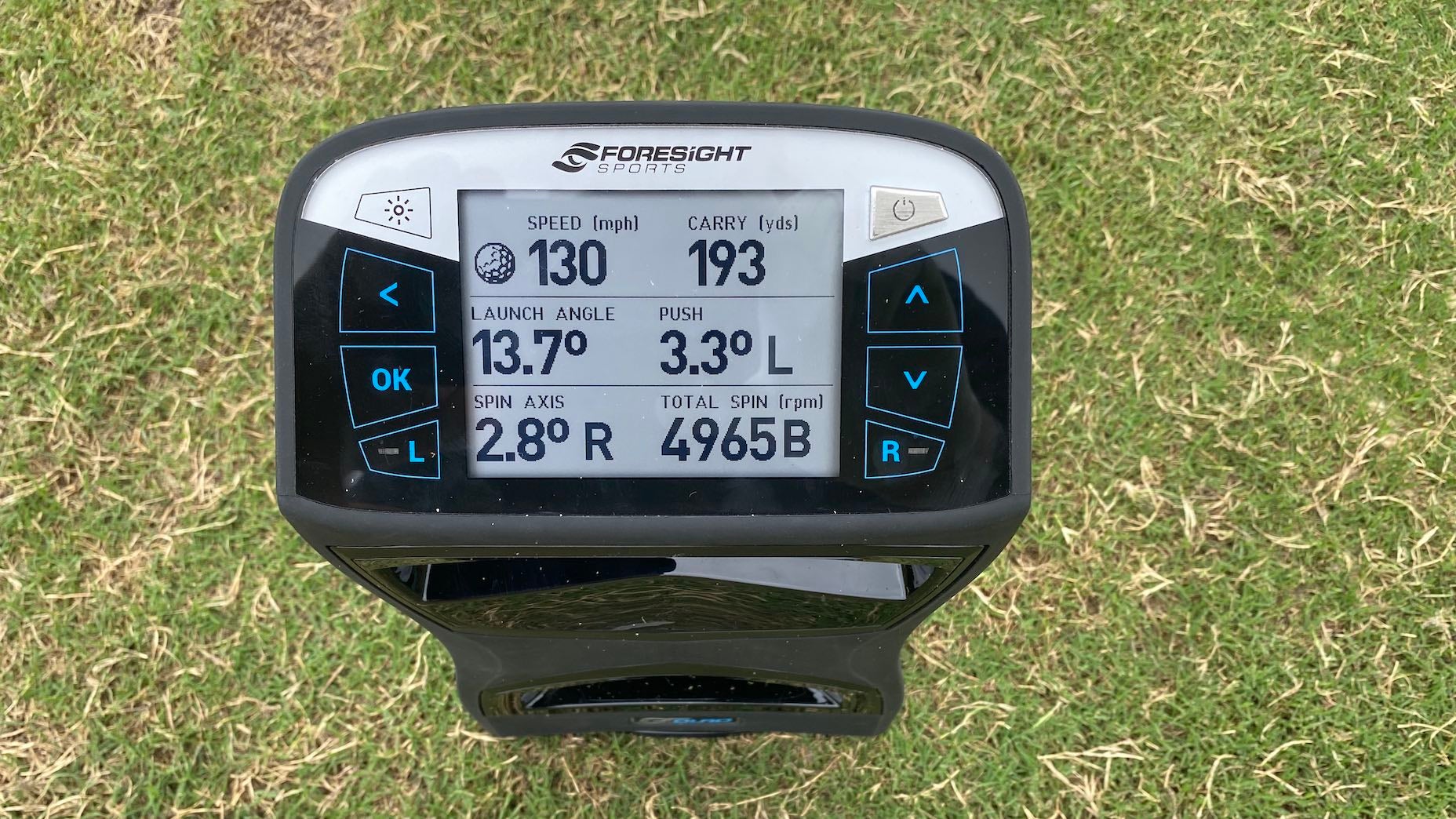
Wall’s Foresight GCQuad launch monitor numbers with a Ping i59 5-iron.
Jonathan Wall/GOLF.com
To see if they were a worthy replacement, I tested out the 5-iron and 7-iron to see how they stacked up against my gamers. I’ve always done initial iron testing with the 5 and 7 because they tend to be clubs I hit on a regular basis during the course of a round. If the numbers look good and the turf interaction is sufficient, I’ll continue testing through the bag and then take them out on the course in calm and windy conditions. But first, initial testing.
One of the first things I noticed was the subtle differences in offset and blade length between i59 and JPX919 Forged in the address position. The i59 was certainly smaller, but the offset and blade length didn’t make you feel like you had to hit it out of the center or suffer the consequences. For a single-digit golfer, it felt like a nice middle ground. The back muscle pad is also concealed at address, which is something I’ve always preferred. I want to see the face, ball and nothing more.
Strong ball-strikers will also appreciate the reduced sole width and crisp turf interaction, but if you’re still learning how to make consistent contact, you’d probably be better off going with something that offers a bit more width and camber.
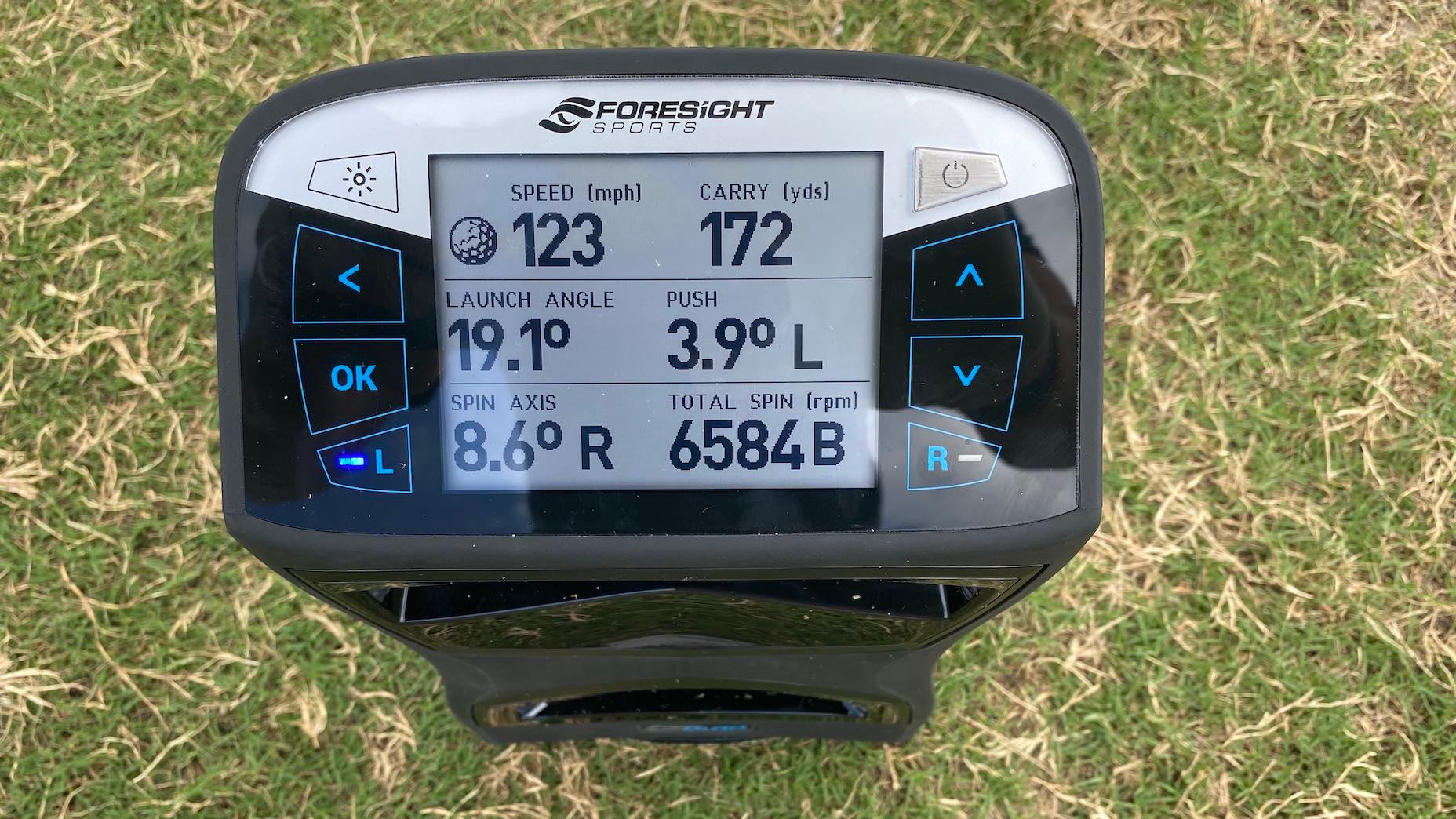
Wall’s Foresight GCQuad launch monitor numbers with a Ping i59 7-iron.
Jonathan Wall/GOLF.com
While the looks and turf interaction earn high marks, what impressed me the most about i59 was how the iron managed to go toe-to-toe against a game-improvement model in ball speed and carry. (Note: To make it a fair fight, I tested the i59 in Ping’s “Power Spec” — each iron is strengthened 2 degrees — for an apples-to-apples comparison.)
With the i59 5- and 7-iron, I saw, on average, 1.5 yards of additional carry, a slight reduction in spin (300-400 RPMs) and comparable ball speed numbers (123 mph with the 7-iron and 130 mph with the 5-iron) compared to the JPX919 Forged. As someone who has struggled to corral spin over the years, fewer RPMs is a welcomed sight.
Something else that was a welcomed sight? Not getting the draw shot shape when I overcook an approach. The i59 didn’t straighten out my miss completely, but it felt as if the draw wasn’t nearly as penal when I overrotated the face. Mishits were in the same ballpark as JPX919 Forged as well, with slight toe strikes producing a 5-7 yard distance loss when compared to my stock yardages.
In other words, the i59 produced comparable numbers to my gamers during initial testing.
More testing is needed to determine if they earn a spot in the bag, but it’s good to know options do exist if you have aspirations of going to a smaller iron profile with game-improvement forgiveness.
Want to overhaul your bag for 2021? Find a fitting location near you at GOLF’s affiliate company True Spec Golf. For more on the latest gear news and information, check out our latest Fully Equipped podcast below.


